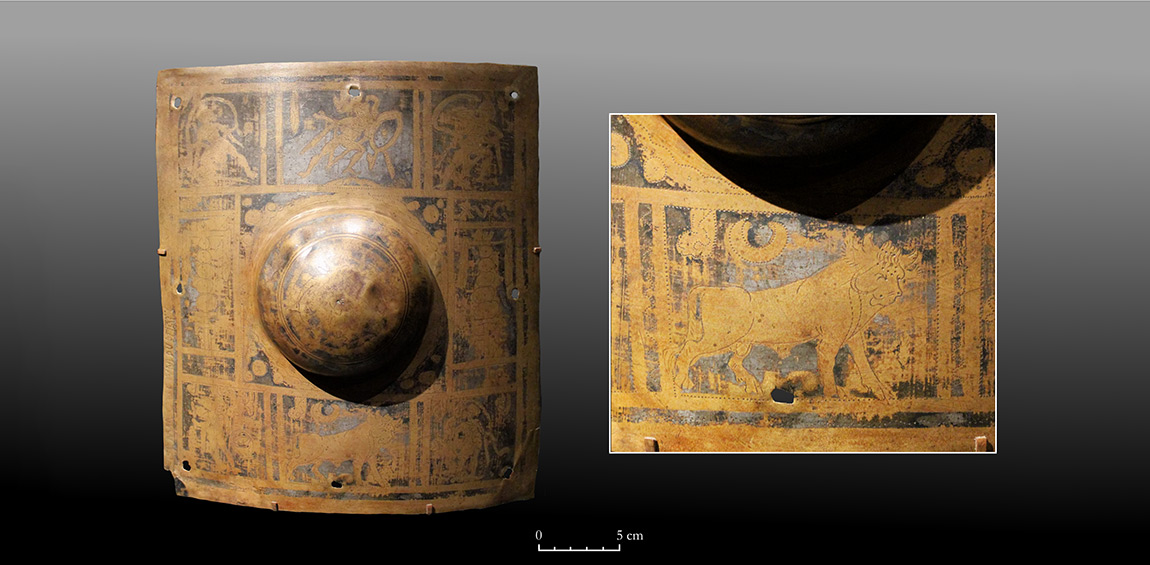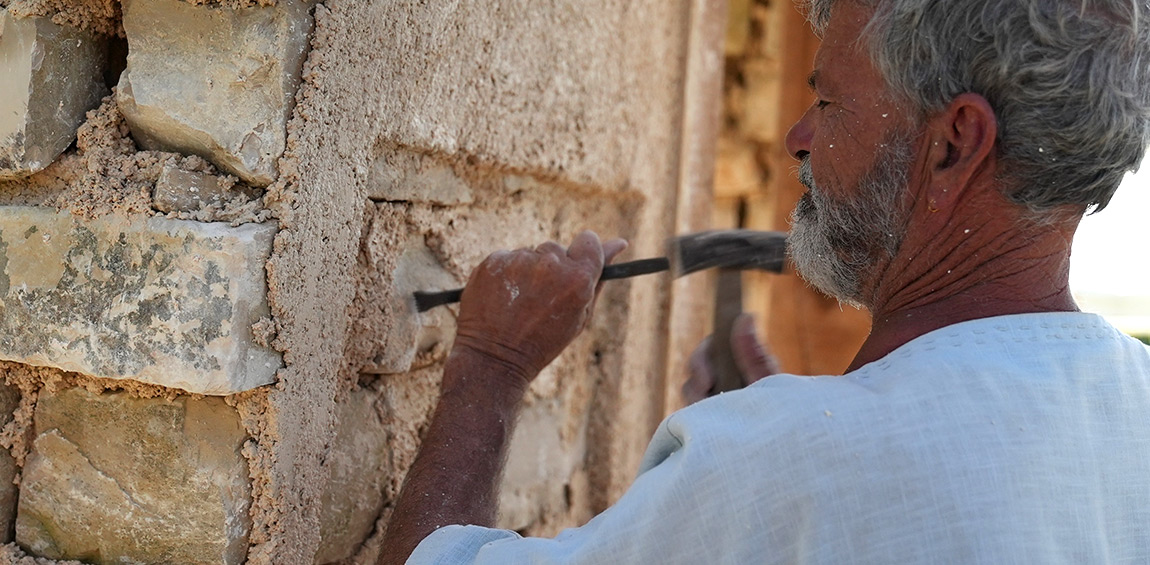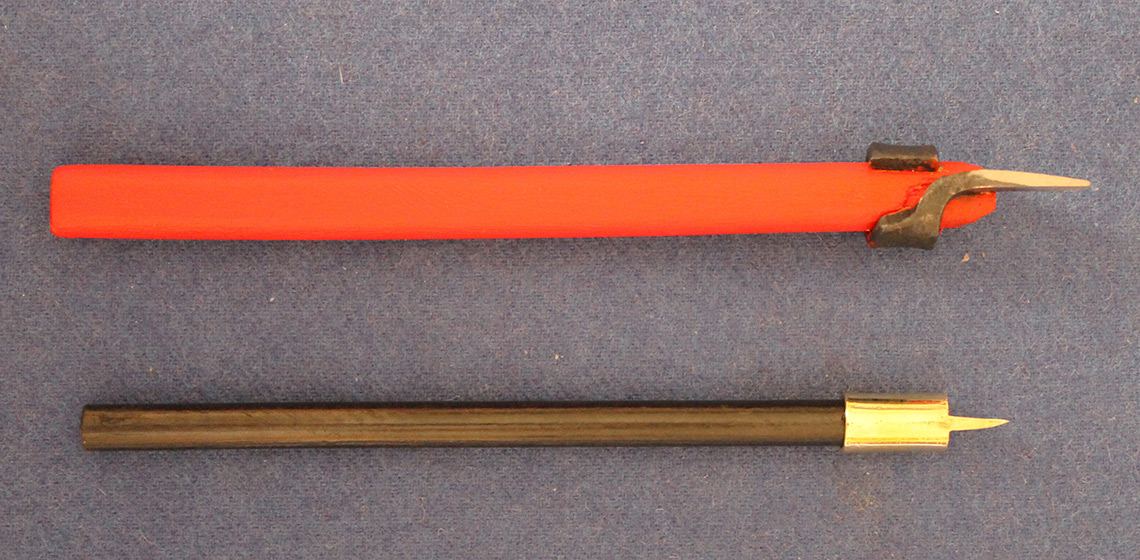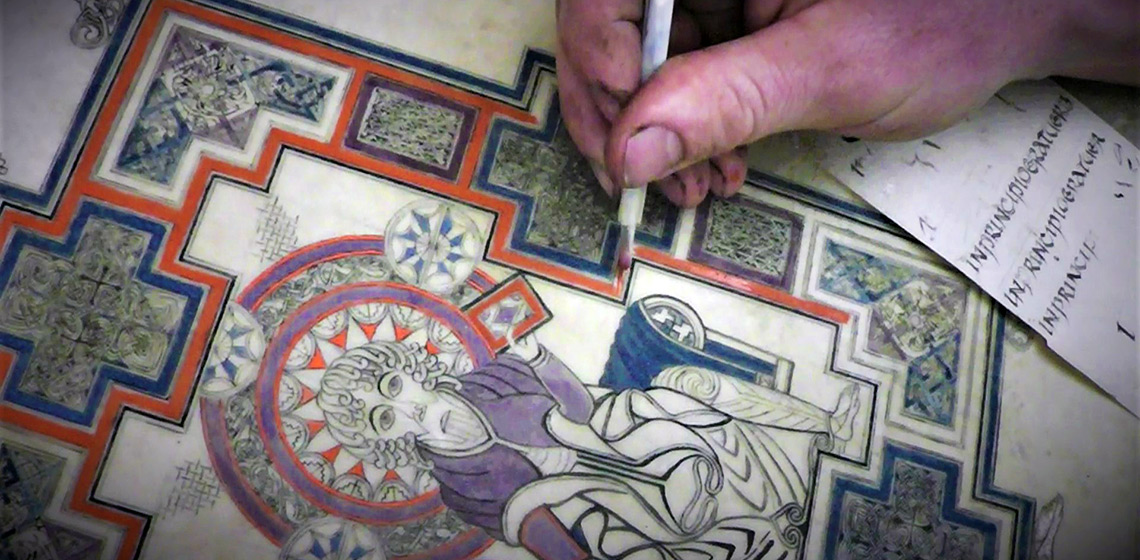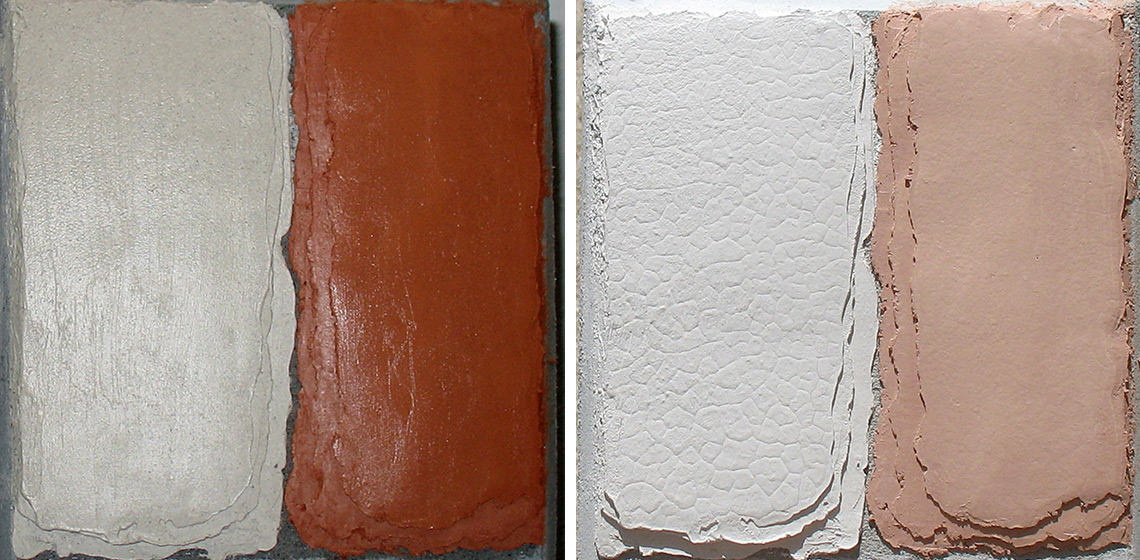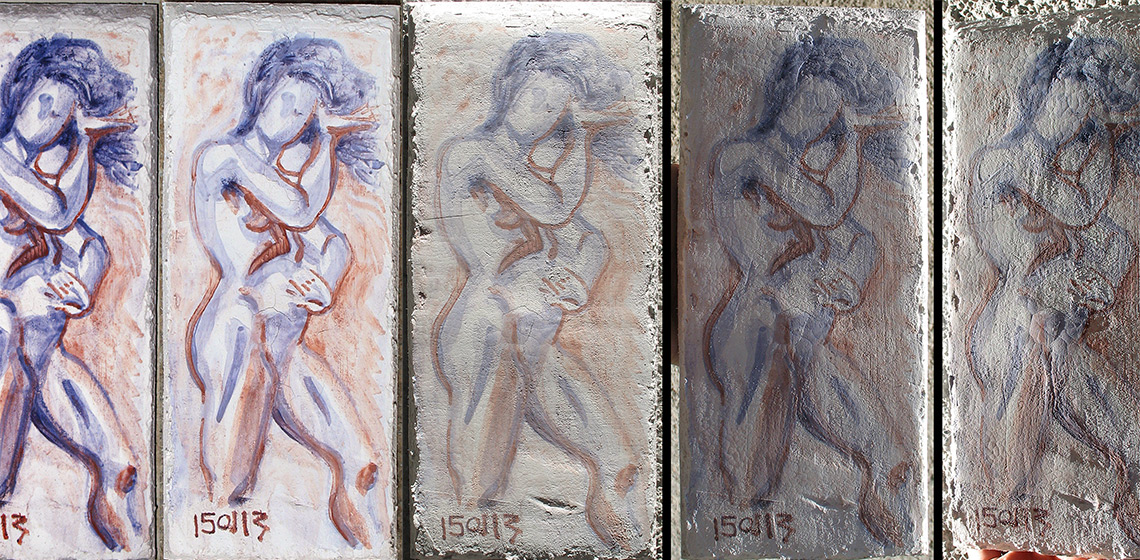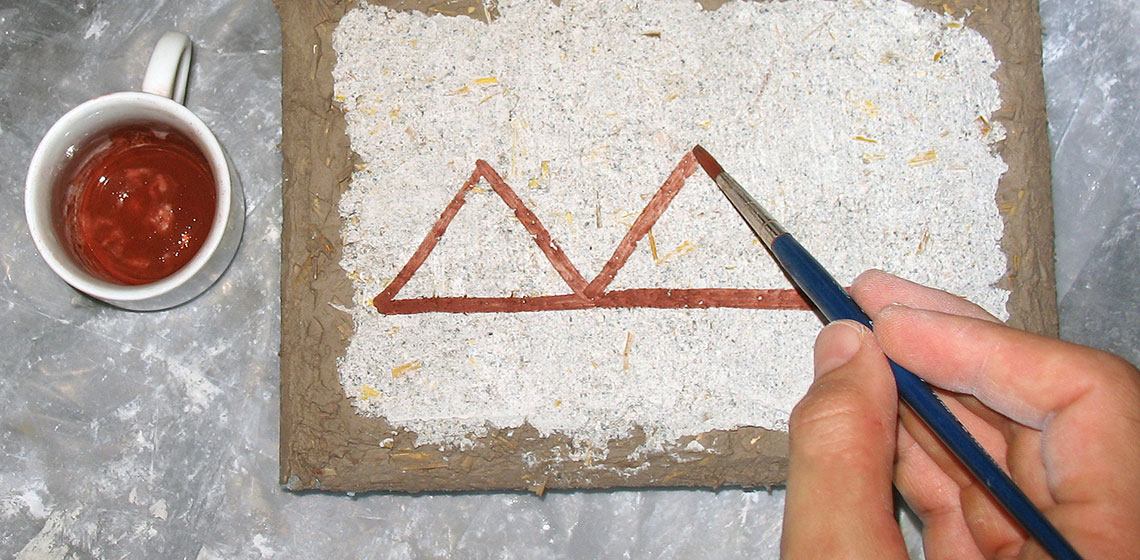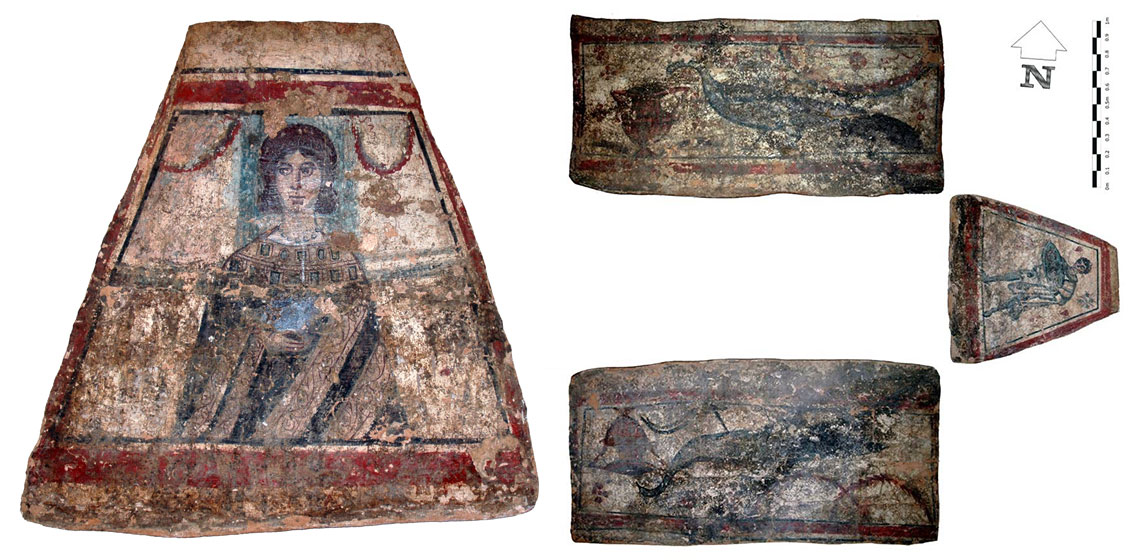painting
The Art of Contrast: Experimental Insights into Partial Tinning on Roman Military Equipment
Publication Date
Roman armour was frequently richly decorated, with embossed designs being among the most striking examples. A more subtle technique, sometimes used alongside embossing, was partial tinning on copper alloys: the selective application of a tin layer to create a visual contrast with the base metal. Recent analysis reveals this method was more technically complex than previously assumed. This article presents experimental insights into how partial tinning could have been achieved using Roman-era technology...
Building Rome in a Couple Days: Erecting a Painted Portico in Alésia
Publication Date
Roman construction is a recurring theme in archaeology, having been studied through many lenses: architecture, materials, urbanism, ornamentation, economics, religion, and so forth. Nevertheless, many aspects of the building process have seldom been the focus of these analyses, especially the specific actions and craftsmen involved in the chaîne opératoire. It is the aim of the Fabri Tignuarii – the roman college of building craftsmen – to delve into the specifics of roman construction...
Experiments on Painting Viking Age Woodwork
Publication Date
Traditionally, studies on Viking Age pigmentation have focused on the minerals used to produce colours. The research conducted in this article concerns other factors, that might have influenced painted wood such as surface treatments, outlines, and paint components...
The Making of Roman Metal Ink Pen Nibs
Publication Date
Roman ink pen nibs have been made from different materials such as bone, horn, reed, iron, and copper alloys. This article deals with experiments to reproduce Roman ink pen nibs made from copper alloy and iron.
Making the Book of Kells
Publication Date
This article gives a brief history of the context of the Book of Kells before summarising recent research into its material makeup. It then goes on to introduce a possible site of production that has been excavated in the Scottish Highlands, before introducing a project to recreate a folio from the manuscript as an experimental archaeology project.
Experiments with Lime Mortars containing Charcoal and Ashes
Publication Date
We encountered a number of cases in the published archaeological studies where ashes and charcoal were used as aggregates in ancient lime mixtures. These mixtures were tested in a small number of experiments, and this paper presents the results. Our tests confirmed that charcoal retains moisture and can be used to help mortars retain water...
Fresco Mixtures with Dried Lime Plaster: Cameron’s Experiments Revisited
Publication Date
Introduction
During the Bronze Age, the craftspeople of the eastern Mediterranean practiced a form of reuse or recycling: fragments of mortar were used as aggregates in lime mixtures intended for walls or floors (Shaw, 1973, p.222; Brysbaert, 2003, pp.168-173, pp.175-176; Jones, 2005, p.220; Brysbaert, 2008, p.118). Such a mixture was found in a house in the Akrotiri settlement of Santorini, in a part of the wall that was intended to be painted (Jones, 2005, p.220).
Painting Bronze Age Plaster from Thebes Boeotia
Publication Date
A series of experiments were conducted to study an unusual mortar mixture identified by Brysbaert (2008a) in plaster fragments found in Thebes, Boeotia (Her study of the samples mentioned in the article included investigation by X-ray diffraction, stereo, reflected light and scanning electron microscopy, laser-induced breakdown spectrometry, micro-Raman spectroscopy and macroscopic study.)...
Mural Painting of a Roman Lady from Viminacium: From Roman Matron to the Modern Icon
Publication Date
During the late antiquity, fresco decorated tombs had a prominent place in funerary practice. All of the scenes and motifs within tombs are dedicated to the deceased persons and their apotheosis. Usually painted on the western wall of the tomb, these portraits could represent a deceased married couple or sometimes individuals...
Reproducing the Wall Painting of the Abduction of Persephone (Vergina-Macedonia): Conditions and Restrictions for a Successful Archaeological Experiment
Publication Date
Research on the technique of fresco painting in Macedonian tombs of the late classical period, is currently in progress through the experimental reproduction of the mural the Tomb of Persephone in the Grand Tumulus of Vergina. The purpose of the research is to identify the techniques used by ancient craftspeople, their tools, materials and ...

